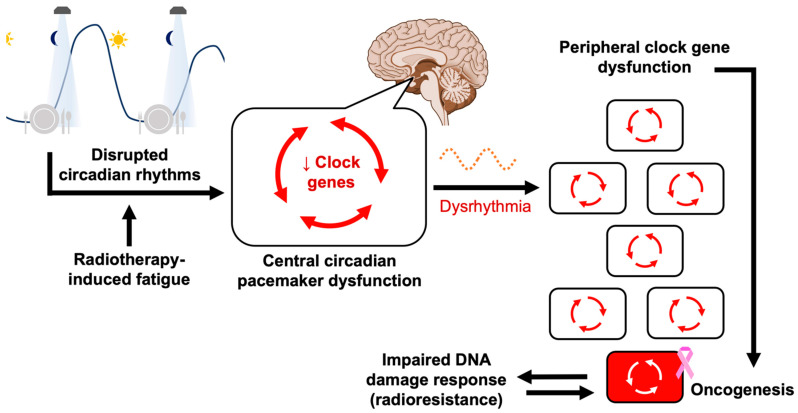Figure 5.
Pathway from artificial light at night to breast cancer formation. This flowchart illustrates the purported sequence of events predisposing night shift workers to breast cancer. Exposure to artificial light at night and other improperly timed cues like meals leads to circadian disruption, blunting the nightly secretion of melatonin. If the suprachiasmatic nuclei fail to integrate conflicting time signals (compromising appropriate clock gene expression), this diminishes their ability to synchronize tissues and organs, leading organ systems to develop asynchronous free-running rhythms. This inconsistent signaling can disrupt the core clock network of individual cells; clock gene dysfunction makes cells more oncogenic and tumor permissive. At the cellular level, circadian rhythms are coordinated by the network of core clock proteins (see Figure 2). See also Section 4.2 for a schematic of cell cycle gating, a key component the DNA damage response.

